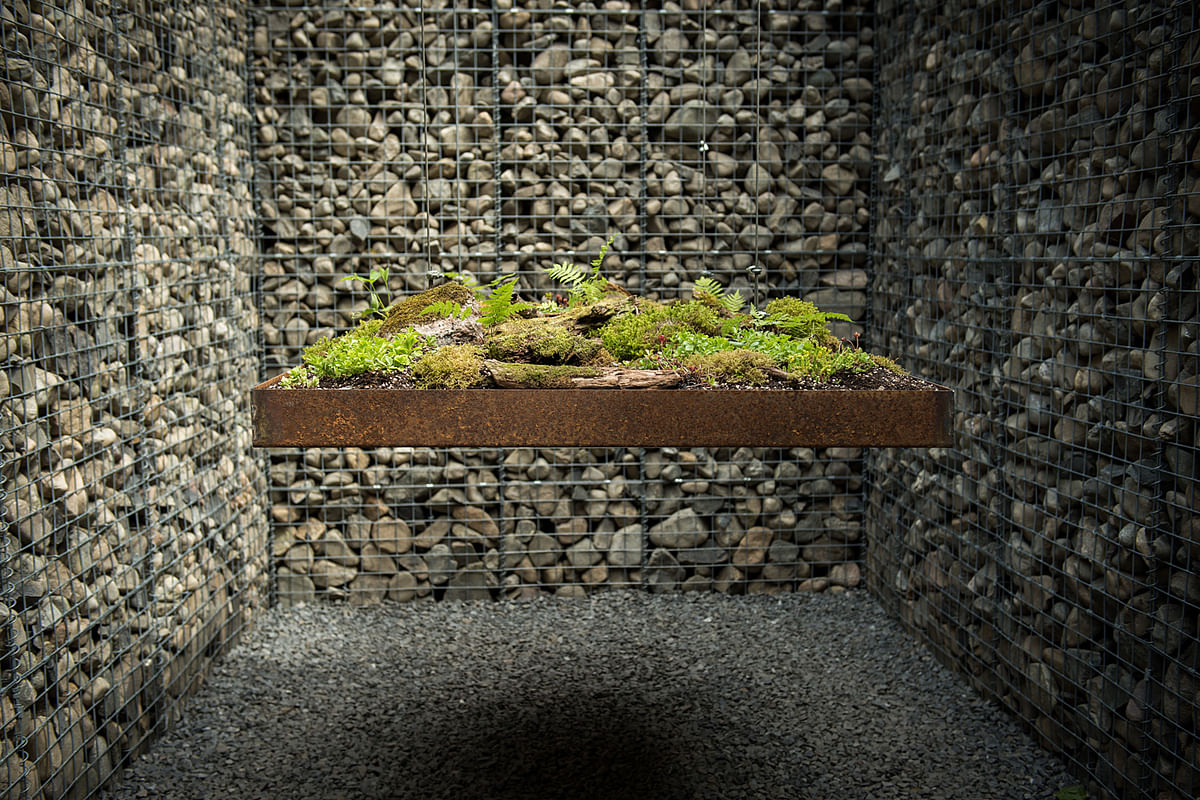
Get lost in the 17th International Garden Festival at Reford Gardens
By Justine Testado|
Tuesday, Aug 23, 2016
Related
Levitating planes of greenery and inverted conical structures are just a few of the immersive landscape installations nestled within the International Garden Festival, currently at the historic Reford Gardens in Grand-Métis, Quebec. Every year, a curated selection of upcoming landscape designers and artists are invited to bring their visions to life in the exhibition, which draws thousands of visitors.
No doubt, the Festival is just as popular with its yearly competition. In the end, a total of 26 designs were selected to participate out of 203 submissions from 31 countries. Don't miss out on this year's International Garden Festival! The exhibition is open until October 2.
Check out some highlights from this year's festival below.
LE CAVEAU by Christian Poules, architect and landscape architect, Basle, Switzerland

Project description: “The growing plane is shrouded in the intimacy of Le Caveau — a simple room of stone and earth. It is a room for reflection. It is a room for dreamers. Just as the plane levitates before us, we are held in the balance of the stone and life itself. The personification of our own imagination is suspended in time. The primitive plane symbolizes a beginning, while the seeds and the soil form the tilted horizon between earth and sky. The beauty of the garden is found in the simplicity and contradiction of material, light, time and space. It is a shelter for meditation and a canvas for nature. In Le caveau, vastness is held behind its ramparts.”
CYCLOPS by Craig Chapple, architect, Phoenix, Arizona, USA
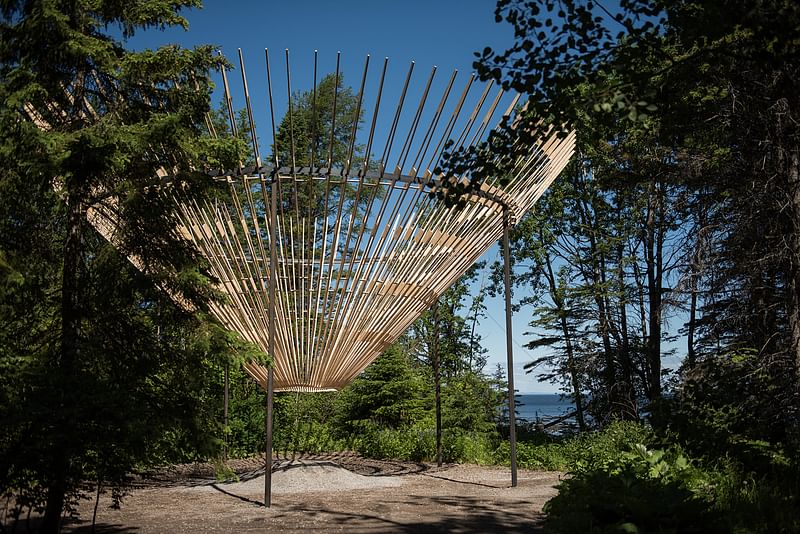
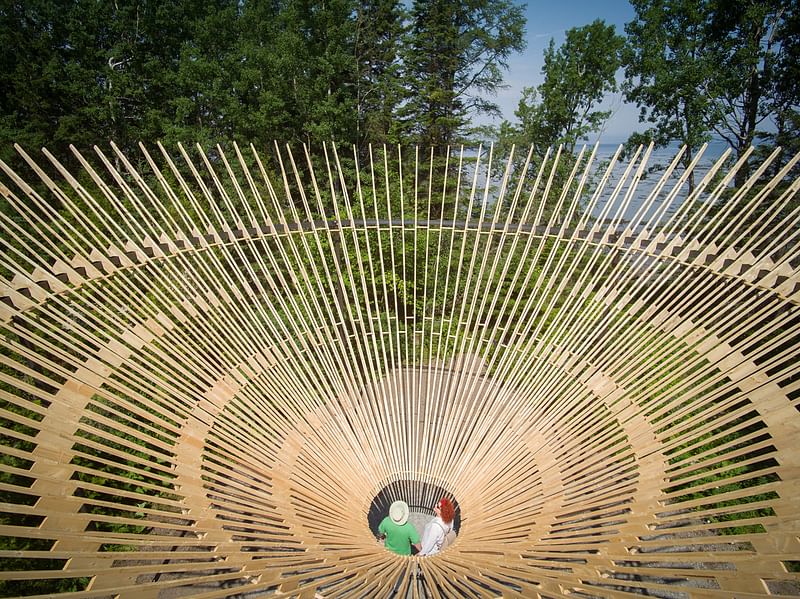
Project description: “Cyclops is a singular object on the landscape as well as a singular frame of the landscape. It is made up of 100 8-meter long tapering timber planks held in the shape of an inverted cone around a central opening for the user to occupy. These planks are fastened to each other at the innermost diameter and held upright by a 150 mm steel ring beam at the outer diameter. At first approach, Cyclops is an object on the landscape, seen as a clear, platonic form. Through its transparency and porosity, however, it is an object that is also dynamic and changing, blending with the environment. By entering the central 1.5 m opening at the bottom of the cone, the user enters into a different relationship with the object and the landscape. By experiencing it from the inside-out, the object acts to frame the surrounding landscape and sky for the viewer in this same dynamic, temporal way by blending the man-made, platonic clarity of the frame with the organic and natural. The viewer plays the central role of the work in rediscovering the relationship between the object, the frame, and the natural landscape.”
LA MAISON DE JACQUES by Romy Brosseau, Rosemarie Faille-Faubert, Émilie Gagné-Loranger, architectural interns, Quebec City (Québec) Canada
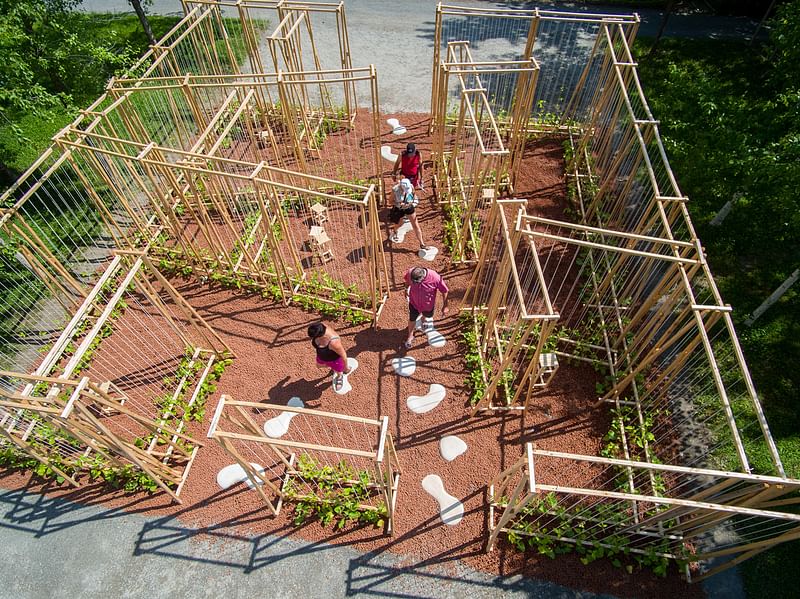
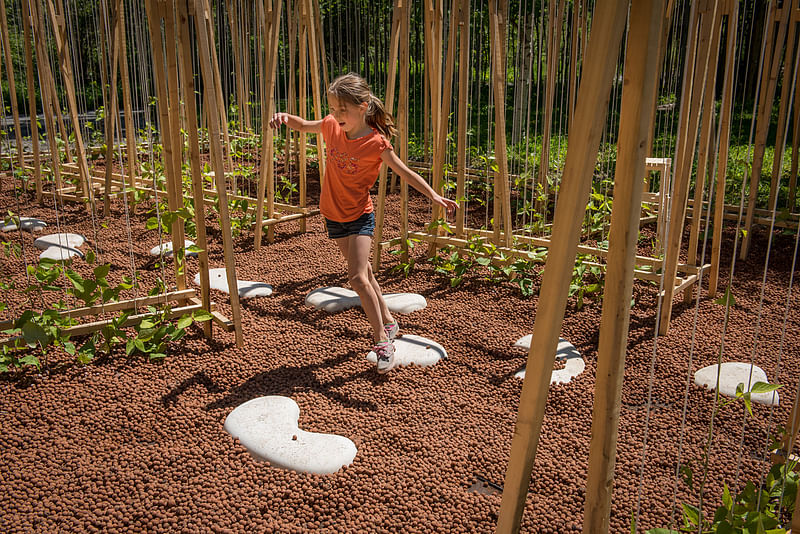
Project description: “La Maison de Jacques (or Jack’s House from the children’s fable Jack and the Beanstalk) is different from the one we know. You might think you have just stepped out of a children’s story. The house is a green grove that is enveloped in bloom. You enter by walking on stepping stones that traverse a ground-cover made of clay beads. Once inside, you wander between the rows of beans of tightly winding their way up a light wooden structure. The walls divide the space into a series of small hidden gardens, singular in their proportions. These cocoons are ideal hiding places for a game of hide-and-seek. One remains a secret, inaccessible... La Maison de Jacques is magical. It will be built over several weeks, starting with the seedlings in May that will grow to be more than three metres in height in a short time. Their clumps of red flowers will be in bloom by the end of July and then the beans will form to bring a taste of goodness to everyone.”
TiiLT by Sean Radford, Chris Wiebe , Winnipeg (Manitoba) Canada
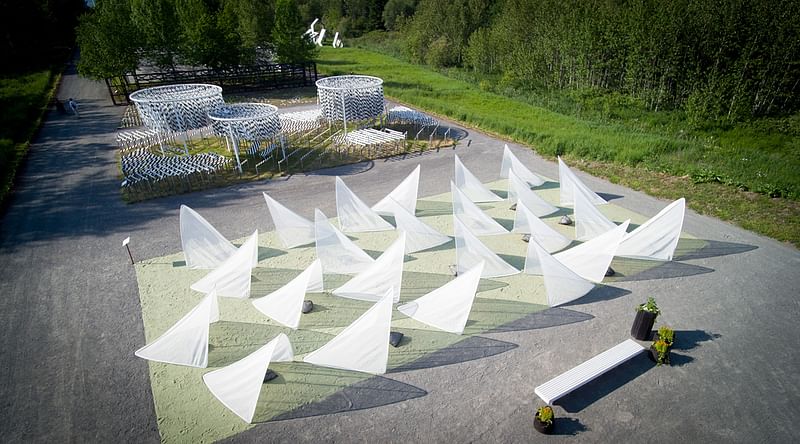
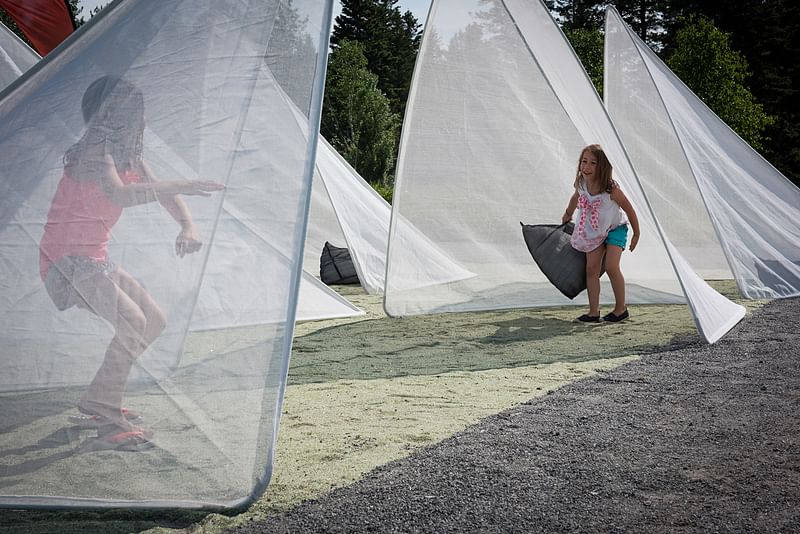
Project description: “Finding roots in the formal geometries of the labyrinth and the many informal camping traditions in the Canadian landscape, TiiLT is a transformable and inhabitable place for visitors to act, or to idle, however they may be inclined. Each structure may be flipped between two orientations, responding to the position of the sun, offering alternating views and shifting pathways through the site. The toggling movement conjures a school of fish, or a flock of birds, flitting in opposite directions yet connected as a whole. The straw-like lightness of the structures and the white skin recall a field of floral blooms, contrasting the surrounding green landscape and blue sky. TiiLT challenges the notion of the garden in creating an interactive environment that is part sculpture and part landscape - to evoke a sense of place and beauty from modest elements. TiiLT provides simple, intimate, shaded spaces in congregation, retrieving memories of long days in short seasons, time spent alone and among neighbours, embracing the feeling of shared disconnection, together.”
Carbone by Coache Lacaille Paysagistes, Nantes, France
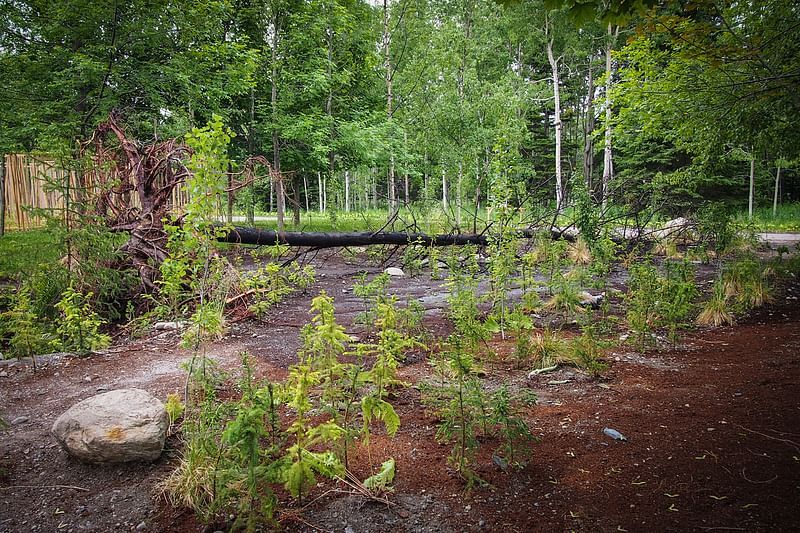
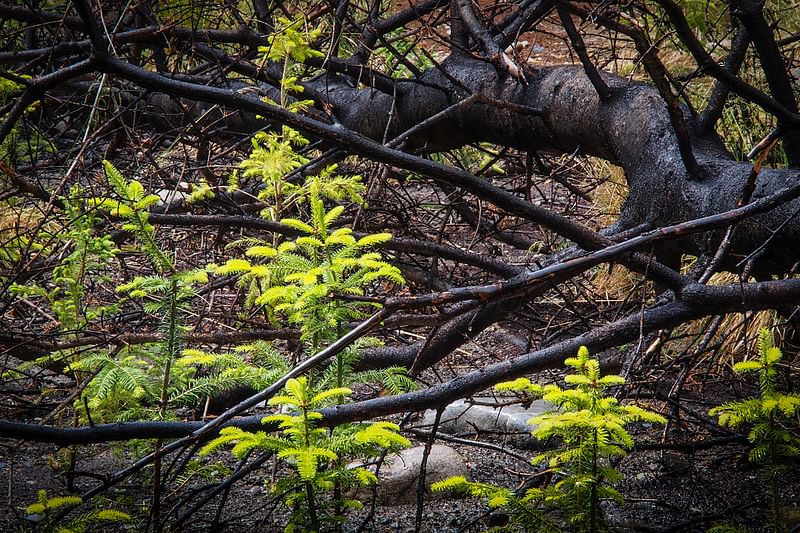
Project description: “The garden is an artifice and leaves many traces. The Earth is a garden. Farming, industry, the internet all leave their mark. Since the dawn of time, nature is altered. The gardener is the one with the restorative power. A gesture of kindness. This installation evokes the cycle of production as a parallel to the carbon cycle. The garden landscaped or the landscape gardened. Regenerating the forest and sowing where we have harvested brings nature back to life. Transmit the love of landscape to those who will outlive us. A noble and familiar material, wood is our crib, our bed, our coffin. Cut a tree, remove it from the forest, in itself a vast garden, is the fruit of our labour. It is the result of the work of those who came before us, who planted a seed and provide us today with the wood that gives us rest. A sculpted tree trunk, partially cut into pieces helps to illustrate the primary material used to build furniture. A stump and its roots, a tree trunk cut into parts and modules made of timber, some lightly burned on the surface. A young tree grows where the tree might have grown tall had the tree not fallen.”
See the rest of the installations here.


Share
0 Comments
Comment as :